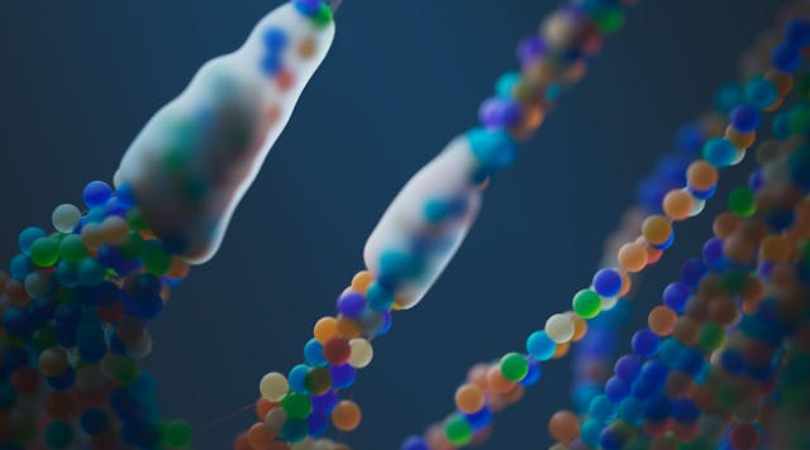Scientists have successfully restored the lost uricase enzyme, a key breakthrough in combating fructose-induced fat formation. This discovery offers new hope for preventing obesity and metabolic disorders by targeting how the body processes sugar and stores fat.
Limited Quantities Available! Order Today and Enjoy Free Shipping on Orders Over $100!
The Link Between Weight Gain and Blood Sugar: What You Need to Know

If you’re doing everything "right" but still can’t seem to lose weight, the issue might not be your willpower or your workout plan. It might be your blood sugar—and more importantly, how your body is using fuel.
In this post, we'll break down how blood sugar, cravings, and insulin resistance work together to promote weight gain. We'll also show how one overlooked sugar—fructose—can quietly shut down your metabolism and make it nearly impossible to lose weight, even when you’re trying hard.
How Blood Sugar Affects Weight
When you eat carbohydrates, especially refined carbs and sugars, your blood sugar rises. In response, your pancreas releases insulin, a hormone that helps transport sugar out of the blood and into your cells.
This process is essential for energy production. But when it happens too frequently or too intensely:
- Your body is forced to produce more and more insulin
- Over time, your cells stop responding to insulin properly—this is called insulin resistance
- Fuel that should be used for energy gets rerouted and stored as body fat
Does high blood sugar cause weight gain?
Not directly. But chronic blood sugar spikes trigger a hormonal chain reaction that leads to fat storage, low energy, and a slowed metabolism. That’s why managing blood sugar is so critical for weight control.
What About Low Blood Sugar?

Ironically, low blood sugar can also lead to weight gain. After a big spike, your blood sugar can crash, leaving you feeling tired, irritable, and craving fast, sugary foods. This sets off a vicious cycle:
- Eat fast carbs → blood sugar spikes
- Blood sugar crashes → cravings kick in
- You eat again to fix the crash → repeat
This yo-yo effect makes it hard to maintain steady energy or consistent eating habits. The result? Your body is constantly playing defense—storing fat and seeking quick fuel instead of burning what it already has.
Also Read - How Blood Sugar Spikes and Crashes Fuel Your Craving?
So Where Does Fructose Come In?
Most people think of sugar as one thing, but it’s actually made of two parts: glucose and fructose. Glucose is used for energy. Fructose, however, is metabolized differently—and it may be the key to understanding why metabolism breaks down.
Fructose doesn’t raise blood sugar much, which makes it seem harmless. But once inside the body, it takes a very different path:
- It goes straight to the liver
- It uses up ATP (your cell’s energy currency)
- It increases oxidative stress
- It reduces the number and function of mitochondria
In simple terms: fructose shuts down your energy factories.
That means even though there’s plenty of fuel in the system, your cells can’t use it. The result? You feel low on energy, even though you’re eating enough—or even too much.
Your brain interprets this as an energy crisis, so it sends out cravings. But since the engine is already running poorly, that extra food just builds up as fat, especially around the belly. And as more insulin is released to handle the growing pile of unused fuel, insulin resistance deepens.
This is the real root of the problem:
- Fructose reduces energy output
- Cravings increase to compensate
- Cells resist more and more fuel (insulin resistance)
It’s like trying to blow into a balloon that keeps shrinking. No matter how much force you use, it gets harder and harder to inflate.
GLP-1 Agonists: Helpful, But Not the Full Picture

With the rise of medications like Ozempic, Wegovy, and other GLP-1 agonists, many people are finding success with appetite suppression and weight loss. These drugs work by:
- Slowing stomach emptying
- Increasing satiety (the feeling of fullness)
- Reducing the urge to eat
In essence, they lower the amount of fuel entering the system. That can be incredibly helpful in the short term, especially for people who struggle with overeating or insulin resistance.
But here’s the problem: they don’t fix the engine.
GLP-1 agonists help by keeping the tank less full. But if your metabolic engine is still impaired—if your cells still can’t burn fuel efficiently because of mitochondrial dysfunction from chronic fructose exposure—you’re still operating in low-power mode. Cravings may go down, but energy, vitality, and true metabolic health may not fully return.
That’s why combining GLP-1 strategies with fructose metabolism support is so powerful. You’re not just controlling fuel levels—you’re improving how the body uses that fuel.
Fructose isn’t the quantity problem. It’s the quality problem. And it needs its own solution.
Why This Matters for Weight Loss
Most weight loss advice focuses on reducing how much you eat. That can help—but it doesn’t fix the underlying problem if your cells are stuck in energy-conserving mode.
To really support fat loss and boost energy, you need to:
- Stabilize blood sugar
- Reduce insulin spikes
- And most importantly, restore your cells’ ability to make energy
When your cells can burn fuel again, you naturally feel better, move more, and crave less.
Tools to Help
If you want to regain control of your weight by fixing how your body handles sugar, here’s what works:
Adopt a low-glycemic eating pattern - Choose whole, unprocessed foods that digest slowly. Vegetables, legumes, healthy fats, and protein help keep blood sugar steady.
Cut added fructose - Look out for high-fructose corn syrup, fruit juice, agave, and even some "natural" sweeteners. These sneak into many packaged foods and drinks.
Support your system with targeted tools
- Allulose helps reduce post-meal blood sugar and may support GLP-1
- Fiber (like guar gum) slows digestion and promotes satiety
- Protein blunts sugar spikes and supports muscle mass
Use Sugarshield
- Sugarshield is a daily supplement designed to support fructose metabolism directly.
- It contains luteolin, a natural compound supported by preclinical research for its ability to inhibit fructokinase, the enzyme that drives fructose metabolism. In a human clinical trial, a luteolin-based nutraceutical also helped reduce liver fat, improve insulin resistance, and support overall metabolic health.
- It also includes tart cherry extract, which helps reduce oxidative stress and support healthy energy production—partly by clearing out fructose byproducts that can disrupt cellular energy pathways.
By supporting your body’s response to fructose, Sugarshield may help restore metabolic rhythm, reduce cravings, and make weight management easier—even in the real world.
Check Out - How Blood Sugar Imbalances Drain Your Stamina?
Final Thoughts
Weight gain isn't just about eating too much. It's about how well your body can use what you eat.
When your cells are stuck in low-power mode due to fructose metabolism, your body holds onto fat, craves more fuel, and becomes resistant to insulin.
The good news? By managing both blood sugar and fructose metabolism, you can get your energy back, regain metabolic flexibility, and finally start burning fat the way your body was designed to.
If you've been stuck in a weight gain loop that doesn't make sense, it's time to stop blaming yourself. Start looking at how your fuel system is functioning—and take steps to fix the engine, not just reduce the fuel.
Ready to shift out of storage mode? Start with balanced meals, targeted tools, and the only supplement designed to address fructose at the source: Sugarshield.
Disclaimer: The information in this blog reflects personal opinions, experiences, and emerging research. It is not intended as medical or professional advice and should not replace consultation with qualified professionals. The accuracy of this content is not guaranteed. Always seek guidance from a licensed expert before making any health-related decisions.


Chris | 🔬 Founder of LIV3 Health
⚡ A keen researcher dedicated to uncovering the root causes of metabolic dysfunction, the key driver of chronic conditions behind 70% of global deaths. His findings led to science-backed, natural solutions designed to inhibit fructose metabolism.
📢 Follow me on Reddit for insights on metabolic health and the future of wellness! -






